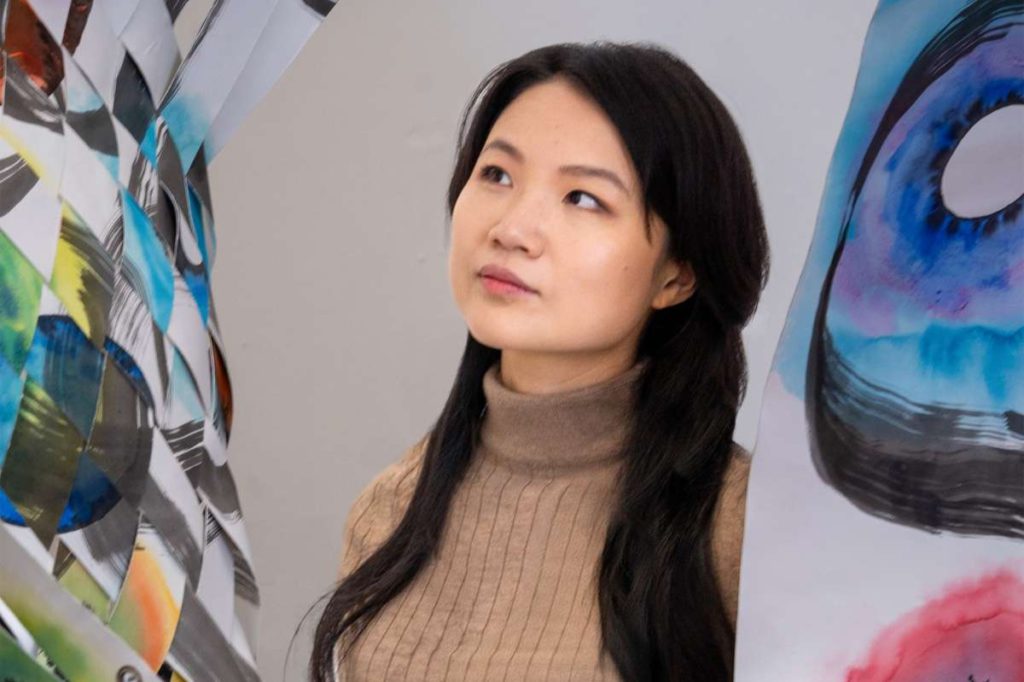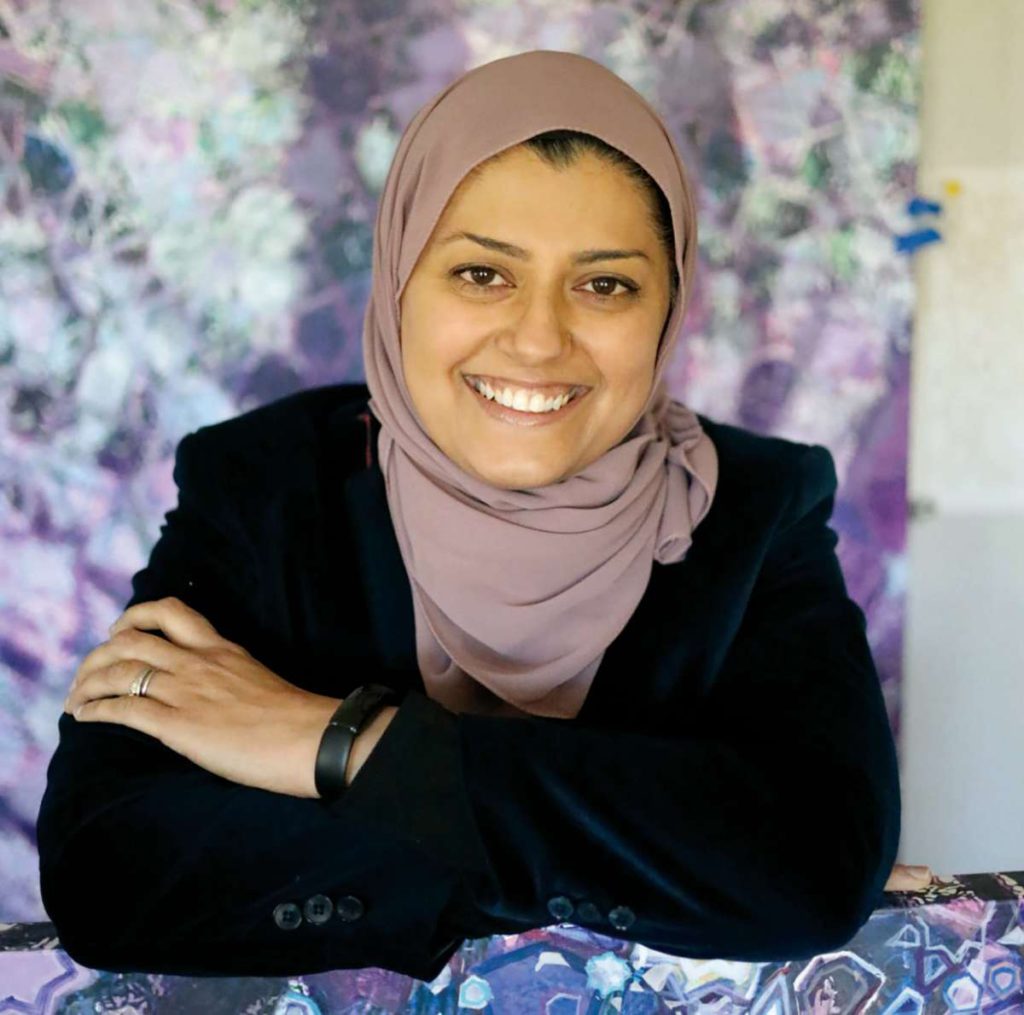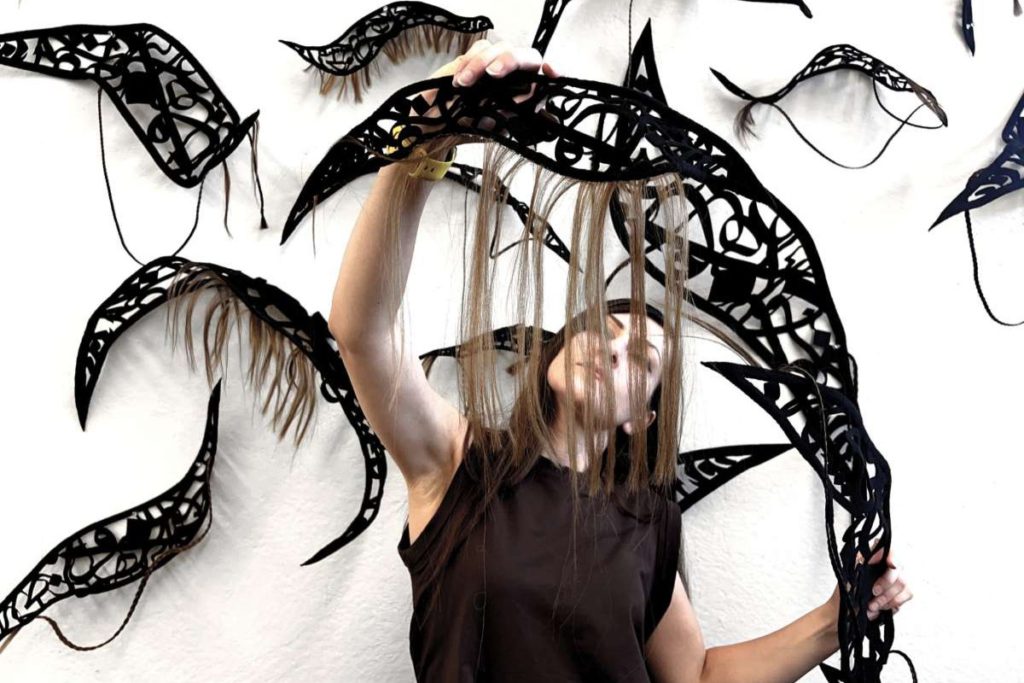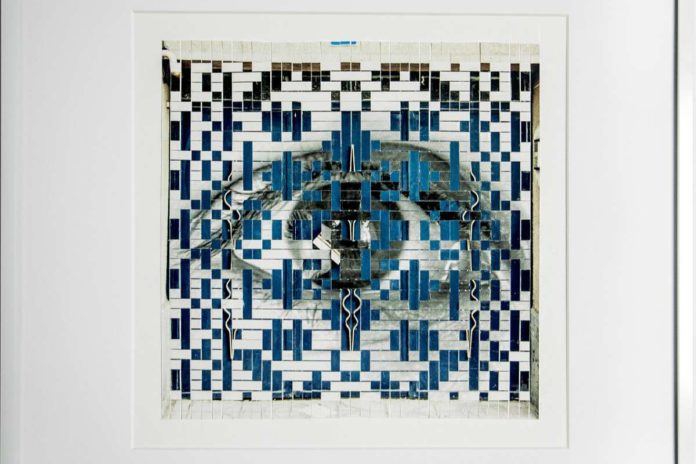“I think it’s precisely the mystery of life that is fascinating,” says artist Yuting Wang. “It’s also humbling: a reminder to accept our limits, to let go, and to flow with life rather than trying to be in control all the time.”
Olive Hyde Art Gallery’s upcoming exhibit will explore these themes across contemporary works from three women artists. Yuting Wang, Bushra Gill and Kiana Honarmand hail from diverse backgrounds and work in diverse media, but all their works for “The River Flows” show the tension and harmony of opposing concepts. In a shared statement, the artists wrote, “In a world often marked by division, this exhibition is a call to connect and understand one another through art.”
Yuting Wang

From Bejing, artist Yuting Wang earned her Master’s degree in Sustainable Design and Construction, working for seven years in the Bay Area as a project manager. Wang shares that she felt like she was living a double life while studying Civil Engineering—under pressure to prove her capability in an industry usually dominated by older men. But in 2023 returned to her childhood love for painting and became a full time artist.
Her nine pieces for “The River Flows” explore the cyclical nature of everyday life and challenge the notion of linear time. The installation “Day and Night, Life and Death” shows images painted on a mobius loop—a shape that by definition has no beginning and no end.
Wang explains, “Either linearity or periodicity is a human perception. If we look, there is plenty of evidence for both. But in modern times, the linear view has been reinforced more strongly—through the invention of clocks, notions of causality, chronological history, and even written language itself.”
The linear view—progress, advancement—purports to be the objective one, but a cyclical view allows people to learn from the past. “We realize that people centuries ago faced similar challenges, that others today experience the same cycles of growth and struggle. We may also be more likely to seek wisdom from older generations as we don’t see them as outdated, but as guides who have been through a similar path.”
Bushra Gill

Born in Karachi, Pakistan and growing up in Houston, Texas, Bushra Gill finds order within the chaos of everyday life via art. She began working as an educator straight out of college after graduating with a BFA in sculpture, but frustrated with how teaching took her away from practicing art, she pursued a career in fashion and kept teaching in museums. When she switched to curating, her education background paid off.
Gill says, “First with my own work…I could step back and see themes emerging and recognize influences after the work was complete. Then, I found that all that experience from analyzing work in museums and galleries was the ideal training for giving feedback and curating other artists’ work. The path I thought was leading me away from what I wanted was actually the scenic route to the same destination.”
In her “Bending Structures” series, literal patterns based on Islamic geometric shapes take on the experience of metaphorical patterns found in identity, loss and connection. Gill notes with humor, “I didn’t realize that I’ve only made 2D work since graduating with a sculpture degree until last year!”
“In my work, the pattern stands in for an unseen order to the world,” Gill explains. “The repetition of shapes on the surface creates a rhythm that moves the eye across the image, and the breaks in the pattern point to our imperfections. From a distance, the images snap into focus. This approach is a reminder to me that everyone and everything are connected.”
Kiana Honarmand

Iranian artist Kiana Honarmand also works with themes of identity in her series “Tapestry of Remembrance,” specifically the complex cultural identity of SWANA (Southwest Asian and North African) women. She shares, “It’s about looking back at people and places that have either disappeared or changed irrevocably, while I live thousands of miles away, shaped by geopolitical forces I had no hand in creating and no control over.”
By constructing and reconstructing photos, she memorializes a bygone era in her life. “Some images transport me directly to the moment they were taken—while others feel oddly unfamiliar, as if time has eroded their meaning. In this way, the pixelation and weaving effect in the images becomes a visual metaphor for memory itself.”
Honarmand’s works layer photos to look like cloth. She explains, “I print my photographs as archival giclée prints, then hand-cut them into strips and weave them together. The weaving patterns are inspired by traditional Persian rugs. I come from generations of women who wove these rugs to support their families. The hands that patiently tied thousands of tiny knots to create intricate designs laid the foundation for the life I now live.”
One of her favorite works for the series is “Afternoon Tea,” where abstract black and red patterns weave into the image of an eye over a still life of a teapot. She says, “I don’t remember what compelled me to take that photo at the time, but looking at it now transports me back—to that house, that kitchen, and the quiet ritual of afternoon tea, which was such a meaningful part of our culture. It’s a simple image, but one that holds a deep emotional resonance for me.”
Art enthusiasts can meet Wang and Honarmand at an opening reception the evening of Friday, Aug. 29. The artists will also share their insights and process in an artist talk on Friday, Sept. 12. Gallery and receptions are free and open to the public.
The River Flows: What Passes, What Remains
Thursday, Aug. 21 – Saturday, Oct. 4
Opening Reception:
Friday, Aug. 29
7 – 9pm
Artist Talk
Friday, Sept. 12
12 – 1pm
Olive Hyde Art Gallery
123 Washington Blvd., Fremont
510.791.4357




